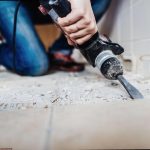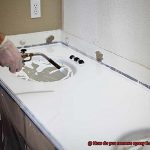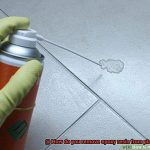As paper enthusiasts, we all know how devastating mold growth can be on our beloved books, documents, artworks, and photographs. Not only does it destroy the paper substrate, but it also poses health risks to anyone exposed to it. Unfortunately, mold is a common problem in homes with high humidity levels, and it won’t take long before it starts colonizing our precious paper possessions.
The million-dollar question is: how can we prevent mold growth on paper and safeguard our prized belongings? The answer may not be straightforward, but taking preventive measures is crucial to avoid costly damage.
In this blog post, we’ll explore several tried-and-tested methods for preventing mold growth on paper. We’ll delve into the causes and effects of mold on paper and provide you with practical solutions to keep your treasured documents, books, and artwork in excellent condition for generations to come. From dehumidifiers and proper ventilation to smart storage techniques, we’ve got you covered.
So whether you’re a bookworm, an art collector, or a photographer – this post is a must-read. Keep scrolling and discover how to protect your paper collections from the harmful effects of mold growth.
What is Mold and How Does It Affect Paper?
Contents
- 1 What is Mold and How Does It Affect Paper?
- 2 Steps to Prevent Mold Growth on Paper
- 3 Store Paper in a Dry and Well-Ventilated Area
- 4 Handle with Clean Hands
- 5 Avoid Stacking Too Tightly Together
- 6 Isolate Immediately if Suspected Mold Growth
- 7 Investing in a Dehumidifier
- 8 Regular Inspection of Paper Materials
- 9 Professional Help from a Mold Remediation Specialist
- 10 Prevention Tips Summary
- 11 Conclusion
Mold is a fearsome foe that can wreak havoc on paper products like books, documents, and artwork. This pesky fungus thrives in warm and moist conditions, and when it starts to grow on paper, it can cause a range of problems. Not only can it discolor the paper with unsightly stains, but it can also weaken the paper fibers, leading to tears and other structural damage. In addition, mold produces a musty odor that can be difficult to eliminate.
Mold spores are constantly present in the air, but they only grow and thrive if they find the ideal environment. Unfortunately, paper provides just what they need: warmth, moisture, and organic matter. As an expert in this field, I know that mold growth on paper is not only aesthetically unappealing; it also poses health risks to individuals who may be allergic to mold spores. Therefore, taking preventive measures is crucial to protect your valuable paper items.
So how can you prevent mold growth on paper? Here are some practical tips:
- Store your paper materials in a dry and well-ventilated area. Avoid damp or humid environments such as basements or attics. If you live in an area with high humidity, invest in a dehumidifier to keep the air dry.
- Handle paper materials with clean hands to prevent introducing moisture and oils from your skin onto the paper. Use gloves if necessary.
- Avoid stacking paper items too tightly together as this can trap moisture and create a breeding ground for mold. Instead, use acid-free tissue paper or interleaving sheets to separate individual items.
- Regularly inspect your paper materials to identify any potential mold growth at an early stage. This allows for prompt action and mitigation of the problem before it causes extensive damage.
- If you suspect mold growth on paper, isolate the affected item immediately to prevent it from spreading further. Do not attempt to remove the mold yourself as this can release spores into the air. Seek professional help from a mold remediation specialist instead.
Steps to Prevent Mold Growth on Paper
Mold growth can weaken fibers, cause unsightly stains, and even pose health risks. Fortunately, there are steps you can take to prevent mold growth and protect your paper items.
Firstly, it’s essential to store paper items in a dry and cool environment. Direct sunlight, damp areas, and sources of moisture such as leaky pipes or windows can attract mold spores. Avoid these conditions and consider using a dehumidifier or air conditioner to reduce humidity levels in your home.
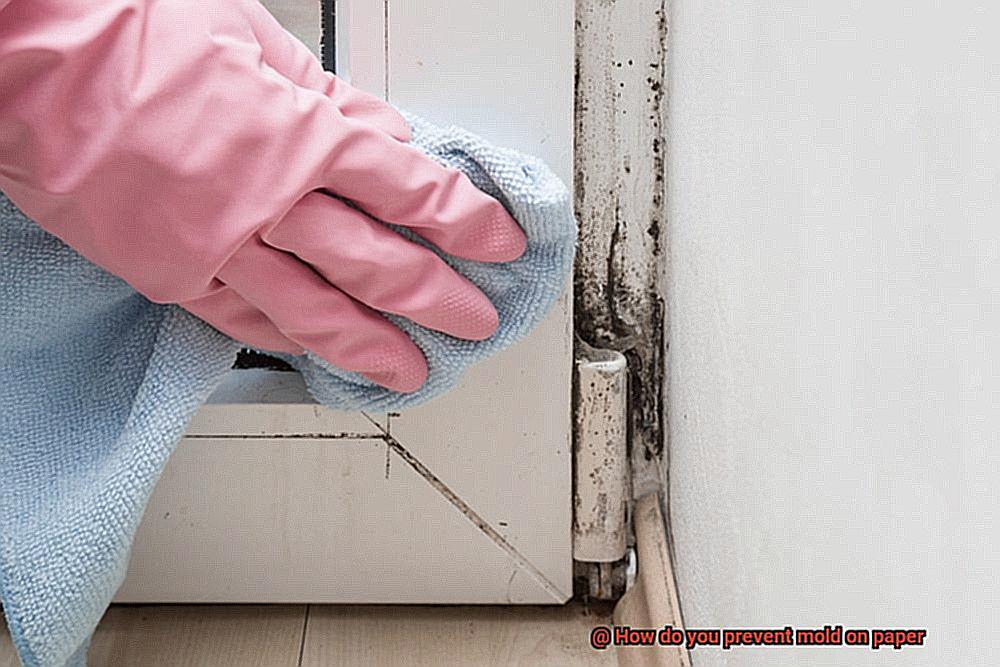
Secondly, proper ventilation is crucial in preventing mold growth. Proper air circulation can help reduce the buildup of moisture in the air and lower the risk of mold growth. Open windows or use fans to circulate the air.
Thirdly, use acid-free and archival quality paper products for storing important documents and artwork. Acidic papers can deteriorate and attract mold spores over time. Archival quality papers are designed to resist yellowing, fading, and deterioration due to age and environmental factors.
Fourthly, handle paper items with clean hands and avoid touching them with dirty or greasy hands. Oils from our hands can leave stains and attract dirt, dust, and even mold spores.
Lastly, regularly inspect your paper items for signs of mold growth. Early detection is key in preventing further damage and preserving your precious paper items for years to come.
Store Paper in a Dry and Well-Ventilated Area

Thankfully, there are steps you can take to prevent this from happening, starting with storing your paper in a dry and well-ventilated area.
Why is this so important? Well, moisture is the primary culprit when it comes to mold growth on paper. This means that keeping your paper in a dry environment is essential. To achieve this, avoid storing your paper in damp areas like basements, attics, and garages. Instead, choose a cool, dry space with a humidity level between 30-50%. You can use a hygrometer to monitor humidity levels in the room.
In addition to keeping your paper dry, you must also keep the storage area clean and free of dust or debris. These materials can attract mold spores and contribute to the growth of mold on your paper. Regular cleaning with a vacuum cleaner or damp cloth can help prevent this from happening.
Finally, proper air circulation is vital for storing paper. Stacking paper too high or too tightly together can limit airflow and trap moisture, leading to mold growth. Instead, use shelves or cabinets with sufficient space between them to allow for proper ventilation.
To summarize, here are the key steps you can take to store your paper properly and prevent mold growth:
Choose a cool, dry space with a humidity level between 30-50%.
Keep the storage area clean and free of dust or debris.
Use shelves or cabinets with sufficient space between them to allow for proper air circulation.
Handle with Clean Hands
If you’re a paper aficionado, you know how crucial it is to protect your beloved paper from mold growth. But have you ever considered how handling paper with dirty hands can impact its longevity? It may seem like a minor detail, but it can make a world of difference in preventing mold growth on paper.
When we handle paper with dirty or sweaty hands, we transfer oils, dirt, and bacteria onto the paper surface. These elements create an ideal environment for mold spores to grow and thrive. To prevent this from happening, you need to handle paper with clean hands.
To do this, start by washing your hands thoroughly with soap and warm water before touching any paper material. Dry your hands completely with a clean towel or air dryer before handling the paper. If you’re working with large quantities of paper, make sure to rewash your hands periodically to avoid contamination.
To further safeguard your paper from mold growth, avoid touching the paper surface unnecessarily. Repeatedly touching or rubbing the paper against other surfaces can cause friction and create micro-tears on the surface. These tears attract moisture and provide a breeding ground for mold spores. Use gloves or other protective measures if you need to handle the paper frequently or for an extended period.
Lastly, it’s crucial to keep your workspace clean and free from dust and debris. Regularly dusting and vacuuming the workspace can help reduce the amount of mold spores in the air and prevent them from settling on the paper surface.
In summary:
- Always handle paper with clean hands.
- Wash your hands thoroughly with soap and warm water before touching any paper material.
- Dry your hands completely with a clean towel or air dryer before handling the paper.
- Avoid touching the paper surface unnecessarily.
- Use gloves or other protective measures if you need to handle the paper frequently or for an extended period.
- Keep your workspace clean and free from dust and debris.
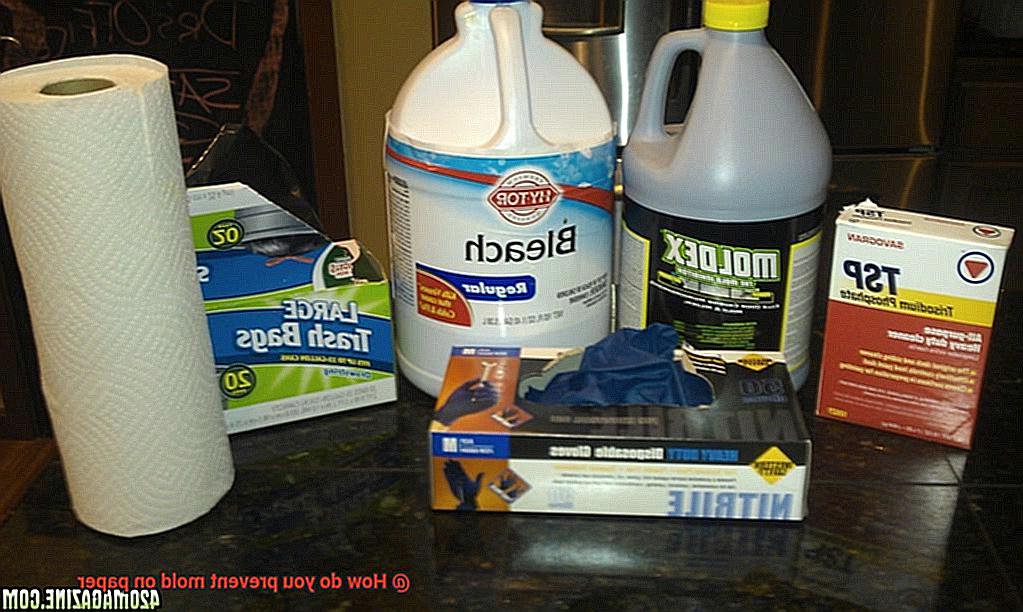
Avoid Stacking Too Tightly Together
When it comes to storing paper, there’s more to consider than just keeping it clean and dust-free. Mold growth can wreak havoc on your beloved papers, causing irreversible damage. That’s why it’s essential to avoid stacking paper too tightly together.
To prevent mold growth, proper storage containers are a must-have. Acid-free storage boxes or folders are ideal for preserving paper and preventing mold growth. These containers allow for air circulation and provide a barrier against moisture and dust. Plus, they’re compact and easy to organize, making them an excellent option for any paper collection.
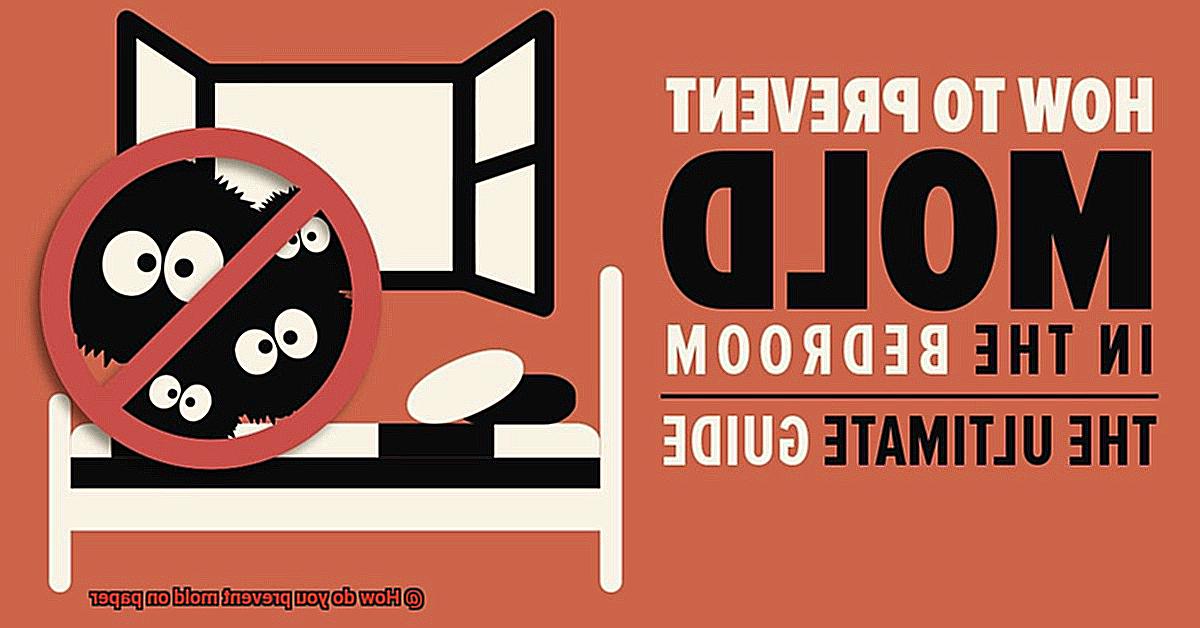
But that’s not all. Keeping an eye on the temperature and humidity levels in the storage area is also crucial. Mold thrives in warm, moist environments, so keeping the humidity level below 50% is essential. You can regulate the moisture levels in the storage area by using a dehumidifier or air conditioning unit. This way, you can ensure that your paper collection remains in tip-top condition.
Another helpful tip is to handle paper with clean hands. The oils and moisture from our hands can transfer onto the paper and create a breeding ground for mold. To avoid this, make sure to wash your hands thoroughly before handling any paper and avoid touching it with dirty or wet hands.
Last but not least, avoid stacking paper too tightly together. When storing paper, it’s crucial to allow air circulation to prevent moisture buildup. Tight stacks of paper create a warm and humid environment that’s perfect for mold growth. So, make sure to leave enough space between each sheet of paper to ensure adequate airflow.
Isolate Immediately if Suspected Mold Growth
Suspected mold growth must be taken seriously and dealt with promptly. The first step is to isolate any paper materials showing signs of mold growth to prevent the spread of mold spores.
Mold spores are incredibly sneaky and can easily contaminate nearby paper materials. Therefore, it’s crucial to act quickly when you notice any discoloration, musty smells, or visible mold growth on your paper collection. To isolate the affected paper, remove it from its current location and place it in a sealed plastic bag or container.
However, before handling the affected paper, protect yourself by wearing gloves and a mask. Touching moldy areas with bare hands can cause the spores to spread, leading to further contamination.
After isolating the affected paper, you need to decide whether to clean or dispose of it. If the damage is minor, you may be able to clean the paper using a soft brush or cloth and a solution of water and vinegar or hydrogen peroxide. However, if the damage is severe or the paper cannot be cleaned effectively, it’s best to dispose of it properly.
To dispose of mold-contaminated paper safely, contact your local waste management facility for guidance. By taking quick action and following proper cleanup procedures, you can help protect your paper materials from further damage and ensure a healthy environment for yourself and others.
Investing in a Dehumidifier
Don’t despair, investing in a dehumidifier may be the solution you need. However, before you make your purchase, there are a few important considerations to keep in mind.
The first thing to think about is the size of the room where you plan on using the dehumidifier. It’s crucial to select a unit that is appropriate for the space, so it can work effectively to remove excess moisture from the air and prevent mold growth on your paper items.
Once you know the room size, take a look at the humidity levels. This will help you determine which type of dehumidifier is best suited for your needs. There are two main types: refrigerant and desiccant. Refrigerant dehumidifiers work by drawing air over a cold coil, while desiccant dehumidifiers use a chemical drying agent to absorb moisture from the air. Both types can be effective at reducing humidity levels and preventing mold growth on paper, but refrigerant dehumidifiers tend to be more energy-efficient and better suited for larger spaces. In contrast, desiccant dehumidifiers are ideal for smaller spaces or areas with low temperatures.
Investing in a dehumidifier not only protects your valuable paper collection but also improves indoor air quality and reduces the risk of other health issues associated with high humidity levels. Furthermore, by reducing the need for air conditioning, it can potentially save you money on energy bills.
Regular Inspection of Paper Materials
Then regular inspection of your paper materials is a must.
The porous nature of paper materials makes them particularly vulnerable to mold growth. Mold thrives in damp and humid environments, which can cause discoloration, spots, and even deterioration. By conducting regular inspections, you can detect and address mold growth early on, preventing further damage to your precious collection.
During the inspection process, pay attention to the following:
- Discoloration or spots on the paper: These are telltale signs of mold growth.
- Musty or earthy odor: If your paper materials have this smell, it could be an indicator of mold.
- Surrounding environment: Check for any signs of water damage or excessive moisture that could contribute to mold growth.
If mold is detected during the inspection, don’t panic – immediate action is necessary to prevent further spread. Here are some steps you can take:
- Isolate the affected paper material.
- Remove any visible mold using a soft brush or cloth.
- Ensure proper ventilation to reduce humidity levels.
- Seek professional help in cases of severe mold infestation.
To maintain the condition of your paper materials, conduct inspections at least once every six months in areas with high humidity levels or where paper materials are stored for extended periods. Keeping a record of inspection dates and findings will help you track changes over time and address issues before they become severe.
Professional Help from a Mold Remediation Specialist
Mold growth on paper can be a nightmare scenario for anyone. It can destroy important documents, photographs, and books in no time. However, the good news is that you don’t have to deal with it alone. Seeking professional help from a mold remediation specialist can provide valuable insights and solutions for preventing mold on paper.
Here are some of the ways that a mold remediation specialist can help:
- Environmental assessment: A mold remediation specialist will assess the environment in which the paper is stored. They will look for any sources of moisture or humidity that may be promoting mold growth. Even small amounts of moisture can lead to mold growth, which can quickly spread and cause significant damage. Therefore, addressing environmental factors is crucial.
- Storage solutions: The specialist may recommend specific storage solutions to prevent mold growth on paper. This could include using air-tight containers or bags to protect the paper from moisture and humidity. They may also suggest moving the paper to a different location if the current space is prone to high levels of moisture.
- Type of glue used: The type of glue used in binding the paper can also contribute to mold growth, especially if it contains high levels of organic materials. A mold remediation specialist may recommend alternative types of glue that are less prone to mold growth.
Prevention Tips Summary
Mold prevention is critical for keeping paper items in good condition. Mold thrives in damp, humid environments, so it’s essential to keep paper dry and free of moisture. Here are five key prevention tips for keeping paper items mold-free.
Store Paper Items in a Dry and Well-Ventilated Area
The ideal environment for paper storage is a cool, dry place with good air circulation. It’s best to avoid basements or attics where humidity levels tend to be higher. A dry and well-ventilated area will help prevent moisture from accumulating and reduce the risk of mold growth.
Use a Dehumidifier
A dehumidifier can be an effective tool in reducing moisture levels in your home or office. By reducing the level of moisture in the air, it can help prevent mold growth on paper and other materials. It’s important to keep the dehumidifier clean and well-maintained to ensure optimal performance.
Handle Paper with Clean and Dry Hands
Moisture from our hands can transfer onto paper, creating a suitable environment for mold growth. Always handle paper items with clean and dry hands to prevent moisture from transferring onto the paper. Avoid using adhesive tapes or glues that contain water or moisture as they can promote mold growth on paper.
Ensure Proper Air Circulation
Proper air circulation is crucial for preventing mold growth on paper items. Avoid storing paper items in airtight containers or boxes, as this can trap moisture and promote mold growth. Instead, store them in well-ventilated areas where air can circulate freely.
Regularly Inspect Stored Paper Items
Regularly inspecting stored paper items for any signs of mold growth is crucial in preventing further spread. If you notice any mold growth on your paper, take immediate action to prevent it from spreading further. This includes removing any affected items from the storage area and cleaning the area thoroughly.
Zy2DZWo8yMk” >
Conclusion
Mold on paper can be a frustrating and potentially costly problem to deal with.
However, there are several steps you can take to prevent it from occurring in the first place. One effective method is to store paper products in a cool, dry environment with good air circulation.
This helps eliminate the moisture that mold thrives on. Additionally, using acid-free paper and avoiding exposure to direct sunlight can also help prevent mold growth.
Regularly inspecting your paper products for any signs of discoloration or musty odors is also important, as catching mold early can prevent it from spreading and causing further damage.


